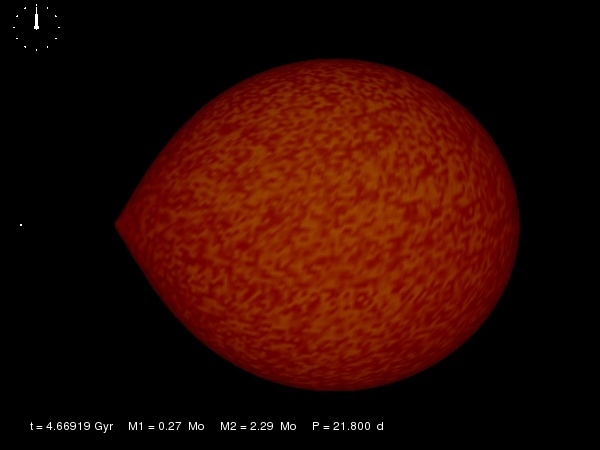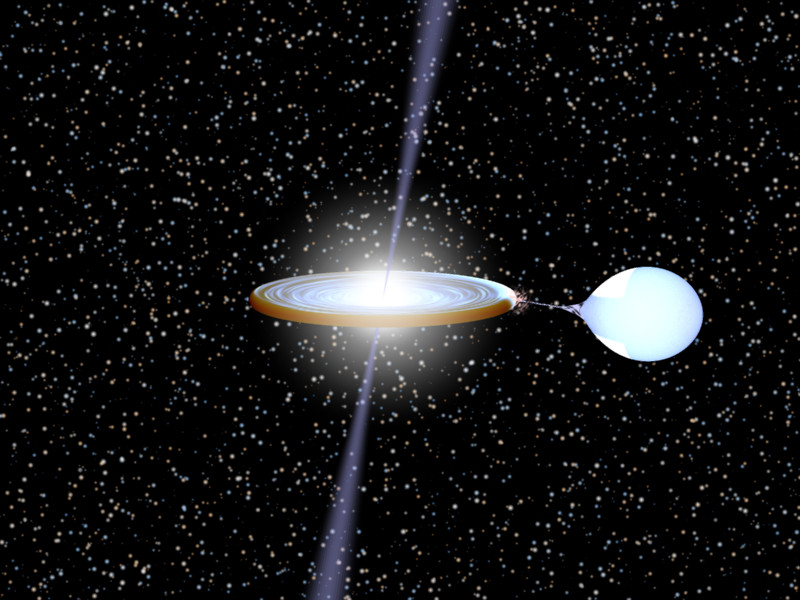deeplink to this page
Binary animations
This page contains some animations I made using
BinSim,
a program to visualise binary stars written by Rob Hynes.
Since BinSim can only visualise binaries with one non-degenerate and one compact member, I had to hack
the code a bit to allow for binaries with two non-degenerate stars. In addition, I wrote a script to convert
output from the binary-evolution code ev to input for BinSim, in order to
create animations of actual (theoretical) evolving binaries.
Conservative mass transfer
A binary with components masses of 1.83Mo and 0.73Mo and an initial orbital period of 2.12 days undergoes stable mass transfer.
The orbital period first decreases, until the component masses are equal, after which the orbit starts expanding again.
The orbital separation scales logarithmically with the true orbital separation, if I recall correctly.
I used output from ev for this animation.

Download full MP4 (400kb)
|
Stable mass transfer + Common Envelope
This animation follows the evolution of the binary through the initial stable mass-transfer phase until mass transfer stops and
the first white dwarf is formed. It then follows the evolution of the now more massive secondary star, until it fills its
Roche lobe. This will cause a Common Envelope, but since ev cannot deal with CEs, the animation stops there.
This animation was made to illustrate how observed double white dwarfs are not formed.

Download full MP4 (450kb)
|
Forming an ultracompact X-ray binary through magnetic capture
In the magnetic-capture scenario, a low-mass donor near the end of the main sequence starts mass transfer to a
neutron-star companion. Under the influence of strong magnetic braking, the orbit shrinks until gravitational
radiation takes over as the dominant source of angular-momentum loss. At the end of the evolution, the orbital
period is only 11 minutes and the donor has a mass that is less than 0.1Mo, typical values for ultra-compact
X-ray binaries (UCXBs). The orbit starts expanding again just before the end of the animation, when the donor
becomes degenerate and ev can no longer follow the evolution.

Download full MP4 (400kb)
|
An ultracompact X-ray binary
An ultra-compact X-ray binary has a low-mass donor, and hence most of the optical light comes from X-rays that are
reprocessed in the disc. In this case, the binary doesn't evolve, but the parameters for the system do come from
the binary-evolution code ev.

Download full MP4 (200kb)
|
|



